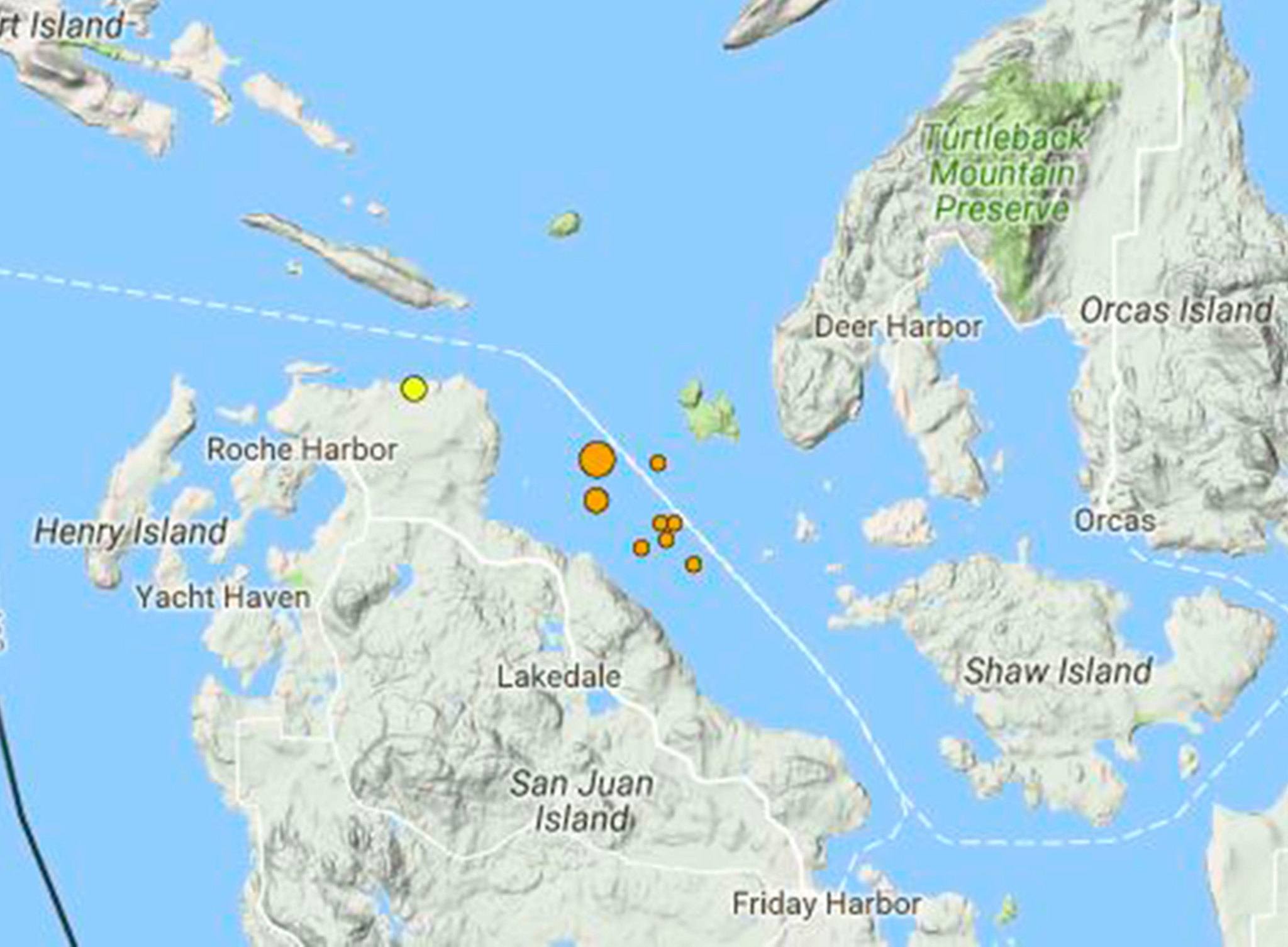By Mandi Johnson
Weekly editor
Between Jan. 29 and Feb. 3, 23 earthquakes rocked the San Juan Channel between San Juan and Orcas islands.
“This is totally normal and to be expected,” said San Juan County Department of Emergency Management Director Brendan Cowan. “There’s all sorts of seismic energy running through Western Washington all the time.”
The swarm of small quakes ranged in magnitude, from .2 to 3.1, and all of the quakes were fairly shallow, occurring between 12.2 and 16.1 km beneath the surface. According to the U.S. Geological Survey, the shallow earthquakes that happen in the Earth’s crust are not caused by plate boundary movement which would typically result in a far larger and deeper quake.
It would be highly unlikely for the swarm of earthquakes that rattled the area last week to have any correlation with the highly anticipated Cascadia Subduction Zone earthquake, commonly referred to as the “big one.”
“There’s no cause for alarm,” said Cowan, adding that the islands are far enough away from the boundary that the shallow earthquakes are related to it. “There’s nothing that anyone knows or thinks or says that makes me think that’s the case.”
Cowan said that the relatively small earthquakes the islands have experienced recently, and in the past, are likely caused by California slowly inching northward and parts of British Columbia creeping to the south. That pressure results in fractures and cracks in the crust’s surface that don’t necessarily relate to the “big one.”
“There’s a lot of compressional force in Western Washington,” said Cowan. “We know of some faults that go near the islands, the main one we think about is the Devil’s Mountain Fault.”
That fault, said Cowan, runs from Darrington through the northern tip of Whidbey and south of the San Juans toward Victoria, British Columbia.
He said that fault has the potential to cause earthquakes with the magnitude of approximately 7.1. An earthquake that strong and that close has the potential to be more destructive to the islands than one along the Cascadia Subduction Zone.
“There aren’t reasons to think there aren’t other faults out there we don’t know about,” said Cowan, who added that the study of seismology is still young, relatively speaking. “There’s probably going to be lots of different faults than we know of that are out there.”
The department’s website (http://joomla.sanjuandem.net/) has details on earthquake potential, a FAQ section and information on how to be prepared for a destructive earthquake. Cowan added that if anyone has additional questions that are not answered by the DEM website, to call 370-7612.
Cowan and the DEM suggest always being prepared for a large earthquake to strike.
“We live in earthquake country,” said Cowan. “You live in a place where at any point in time you can experience a large earthquake.”



